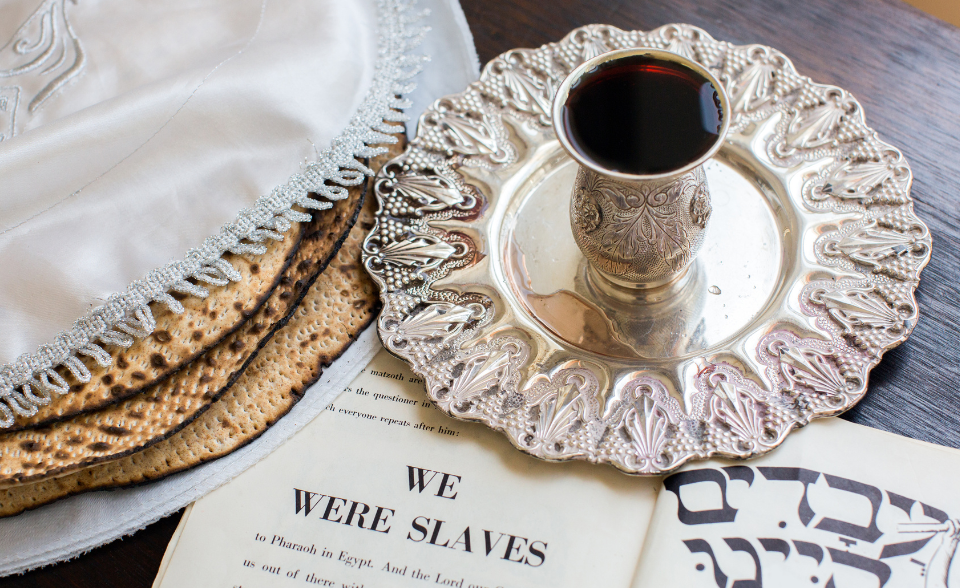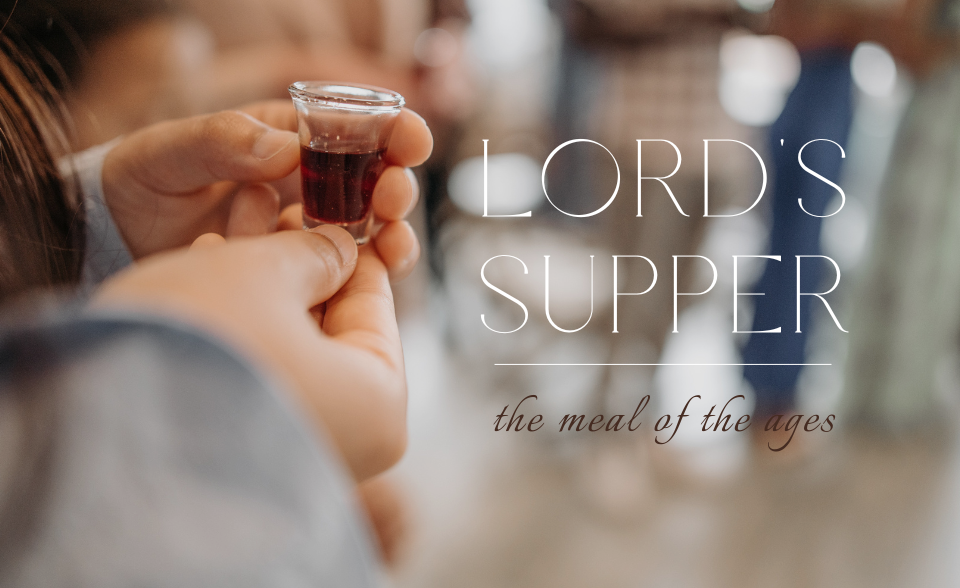It was the night before Jesus’ crucifixion, and the mood around the table was somber. The Passover meal was underway in the Upper Room, and Judas had left the table to betray the Lord. The elements of wine and bread before the disciples were familiar. For 1,500 years, the Jewish people had commemorated their exodus out of Egypt and out of slavery with this meal.
The Passover was replete with themes of slavery, judgment, deliverance, and redemption, and as God would have it, while they looked back at those themes over history, they were playing out again in real time. Major shifts were happening in the kingdom, and unbeknownst to the disciples, the epicenter of those changes was happening right at their table.
Now as they were eating, Jesus took bread, and after blessing it broke it and gave it to the disciples, and said, “Take, eat; this is my body.” And he took a cup and when he had given thanks he gave it to them, saying, “Drink of it, all of you, for this is my blood of the covenant, which is poured out for many for the forgiveness of sins.”
Matthew 26:26-27
Redemption is Now
This passage is often familiar, and we can miss the gravity the disciples must have felt when Jesus delivered these words. The elements of their Passover meal were rich with meaning and tradition, and while they were meant to be remembered, Jesus was reassigning their significance.
Four cups of wine were offered during the meal, representing the four phases of God’s promise of deliverance in Exodus 6:6-7. Each cup represented a statement from God, “I will bring you out,” “I will deliver you,” “I will redeem you,” and “I will take you to be my people.” It was after the third cup and God’s promise to redeem that Jesus reassigned the meaning of the bread and cup

By making these statements, Jesus was unapologetically upending fifteen centuries of tradition and national identity. The Passover was their oldest institution, and Jesus’ words declared it over. The very essence of their deliverance was right here, right now. God had delivered at the Red Sea, but eternal deliverance was happening the next morning on Calvary’s hill. Now was the time of the new covenant.
The Table at the Center of History
Even though they didn’t understand the significance of all Jesus was doing, they knew that the elements Jesus spoke of were symbolic, not his actual body and blood. After all, he was still right there in their midst. But what a gruesome picture he painted of eating his flesh and drinking his blood! As outrageous as his language must have seemed, nothing less would have sufficed, for the most outrageous act of sacrifice and deliverance was just hours away.
Reassigning the meaning of these common bread and wine elements reverberates to this day. The Passover table became the Lord’s Supper table, which stands at the center of history. Now, 2,000 years later, Christians from every tribe, tongue, and language still feast at this table. Even though we partake of it locally, we join saints worldwide and share its blessings universally.
10 Ways to Feast Your Soul at the Lord’s Table
Do you see the bread and the cup as a meal that nourishes both body and soul? Don’t be fooled by its humble appearance. It’s not magical, nor does it save anyone. It’s a meal for Christians, who are warned not to take it in an unworthy manner (1 Cor 11). It is an edible reminder of the grace we’ve received in Christ.
If the Lord’s Supper or Communion has grown ‘stale’ in your heart, chew on the things happening at his table.
- We take and eat. Pay attention to the verbs involved. We take, and we eat. This is not an intellectual exercise where we merely nod our heads. Instead, we actively participate in receiving the bread and the cup.
- We’re physically nourished. Even in its simplicity, this meal physically nourishes. Even if it’s only a sip and a nibble, our bodies benefit from consuming carbohydrates, sugars, and nutrients.
- We’re spiritually nourished. We don’t eat the bread and drink the wine in isolation. They point us to Christ, who is the whole meal. The meager meal doesn’t fill us up, but it points to Jesus, who does!
- We cannot save ourselves. Other hands baked the loaves and squeezed the grapes, reminding us we are dependent creatures. No matter how capable we are, we realize we cannot save ourselves.
- We give thanks. Is your heart postured toward thanksgiving? Jesus modeled this when he broke the bread and gave thanks. This meal and every meal are occasions for us to express gratitude to our Creator and provider.
- We have the assurance of pardon. We come to the table weary, forgetting, and sinful, but we’re reminded that his sacrifice covers all our sins, past, present, and future.
- We remember. Paul told us that whenever we take the Lord’s Supper, we proclaim his death (1 Cor 11:26). His death, burial, and resurrection are the cornerstones of our faith. As Christians, we never graduate from the gospel. This meal helps us remember.
- We look ahead. As we remember, we also look ahead to when he comes again (1 Cor 11:26). There will be a millennial kingdom, where we’ll share an actual feast with Jesus. (Luke 26:29). So our hearts cry, “Come quickly, Lord Jesus!”
- We live in community. Meals shared in community are an expression of friendship and welcome. The ground is level at the Lord’s table, and together, in community, we proclaim our co-union, our communion. The body of Christ comes together to remember his sacrifice.
- We change. When we participate in God’s ordained rhythms of grace, we are transformed from one degree of holiness to the next. Jesus told us to do this often. This is for our good and his glory.
Follow the Food
If you want to know the story of redemption, follow the food. It was by food in the garden man first expressed his disobedience, and by food at the Lord’s table, we express our obedience. Jesus fulfilled all the Passover symbolism and infused the feast with new meaning.
“When Jesus wanted to explain to his disciples what his death was all about, he didn’t give them a theory, he gave them a meal.”
N.T. Wright
I love that about Jesus. This is the meal of ages and the culmination of God’s redemptive plan. He wants us to experience it—to drink it, chew on it, and swallow it so that it becomes a part of us. The themes and flavors of this meal are rich. Come and partake of it and be blessed.
Feasting with you,
Cara
P.S. I hope you’ll check out the other posts in this series Taste & See.

6 Responses
Great to know more of the history and application through the ages.
Thank you, Cara! Just this week I’ve been in the Exodus story where God institutes the Passover, so this is timely and adds layers I didn’t know about the Last Supper. When you pointed out how faithfully the Jews had stuck with the Passover rituals for 1500, I marveled! Then it struck me. Christians have been faithful with our own communion ritual for 2000 years! That’s an obvious reality, but it hit me anew. Brought me to tears. 💜
Cara,
Your writing is beautiful and it strengthens my faith. Thank you. I love your idea of “follow the food.”
Thank you, Cara! Just this week I’ve been in the Exodus story where God institutes the Passover, so this is timely and adds layers I didn’t know about the Last Supper. When you pointed out how faithfully the Jews had stuck with the Passover rituals for 1500, I marveled! Then it struck me. Christians have been faithful with our own communion ritual for 2000 years! That’s an obvious reality, but it hit me anew. Brought me to tears. 💜
I love the symbolism of each cup and how God brought Israel out of Egypt, delivered them, and now redeemed all of us at the cross. I love that Jesus reassigned the meaning of the passover after the third cup, and then said “I tell you I will not drink again of this fruit of the vine until that day when I drink it new with you in my Father’s kingdom” (Matthew 26:29). He is saving the fourth cup until he comes and can take it with all of his redeemed people.
YES! I love the way you put that. The fourth cup is still coming! <3